Challenging torrential rains countered by cooperative bats in Costa Rica
Merlin and MTBC team members spent 19 days in Costa Rica last November on a filming trip for “Bat City” with its Director and Emmy
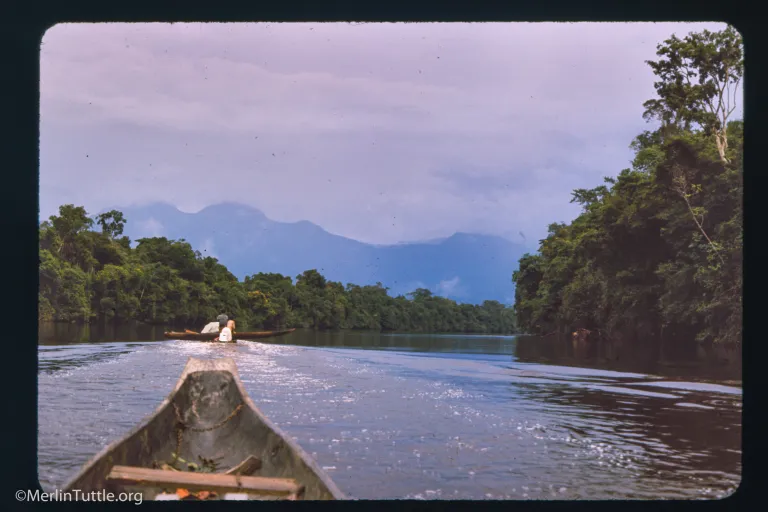
On completion of work on Cerro Duida, the expedition traveled back down the Rio Cunacunuma to Tamatama, the location of the New Tribes Mission headquarters where they had stockpiled supplies.
After replenishing gasoline and other necessities, the team headed up the Orinoco to Boca Mavaca, so named because of its location at the confluence of the Orinoco and Mavaca rivers. They were guided by Cecil Neese, a New Tribes missionary.
Cecil had been among the first to survive early contact with the aboriginal Yanomamö. In his 18 years attempting to win converts, he had learned their language and customs at a village named Bisaasi-teri. The Yanomamö had been a real challenge. He was still hoping for his first convert!
The village where he worked was spread across both sides of the Rio Mavaca. On the other side, his fellow missionary, Jim Barker, was already assisting anthropologist Napolean Chagnon in his ethnographic field work on the Yanomamö.
Cecil Neese had kindly agreed to guide and interpret for Merlin’s work among the Yanomamö. His knowledge of customs and the language would prove invaluable. The group’s first night’s experience with Cecil proved memorable.
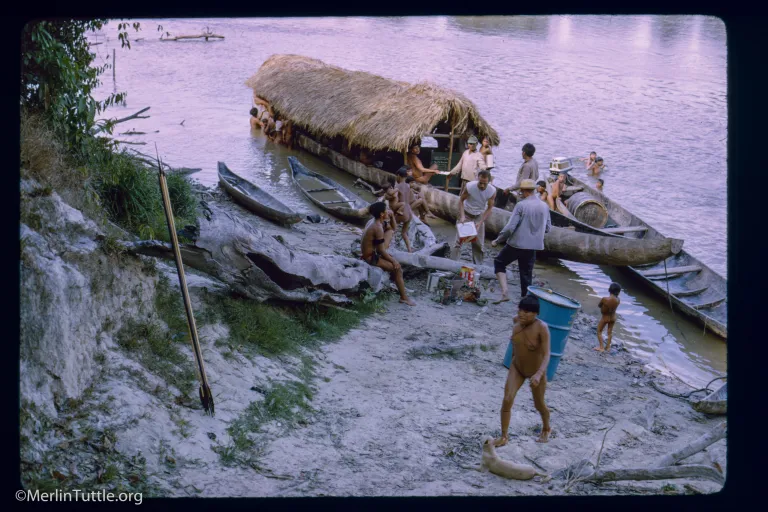
For one-night stays while traveling, the group simply slept in hammocks strung between trees, protected by mosquito nets and large tarps.
Cecil had warned them to coat hammock ropes with kerosene to repel unwanted critters, particularly ants. However, Merlin’s wife, Claudette, objected to the odor, so didn’t allow hers to be treated.
At two o’clock the next morning, the entire group suddenly were awakened by Claudette’s terrified screams. The camp had been invaded by countless thousands of army ants, and hundreds had already entered Claudette’s hammock and were inflicting painful bites.
With treated ropes, the rest of the group was safe—that is until they had to bail out barefooted to rescue Claudette. The moment exposed feet touched ground, they too were bitten as the group frantically grabbed for headlamps and aerosol cans of insecticide. Claudette’s mosquito net had to be saturated with her still inside. There was no escape.
Army ants are famous for attacking prey en masse. A meter-wide column of half-inch-long, black ants had silently invaded camp, then spread to cover everything. From that night on, no one ever again failed to have their hammock ropes treated!
The next morning, as the team continued upriver, Cecil explained some basic dos and don’ts. Never show a Yanomamö a photo of themselves taken with our polaroid camera. It could easily be mistaken as proof that we had stolen a person’s soul, the equivalent of murder, with immediate revenge taken! He also warned of ferocity challenges. They would soon begin testing team member responses to a variety of surprises, some as apparent threats. There was no respect for the meek. Timidity would be endlessly exploited.
With a wink, Cecil explained that he had done Merlin and Fred what he hoped would be a big favor. He had warned the Yanomamö that unlike the missionaries, these men could be dangerous if provoked. He hoped this would convey useful respect, since ferocity determined a man’s leadership in the community.
On arrival at Bisaasi-teri, the men quickly volunteered to help carry heavy equipment up to the group’s chosen campsite just 100 feet from the village entry. Meanwhile, the women didn’t hesitate to explore the clothing of Claudette and Virginia in ways definitely not in keeping with western standards of propriety. The missionaries had tried to convince the Yanomamö to wear western-style clothing with some amusing results. For example, one man was seen proudly wearing a woman’s bra.
The team set up camp near where Napoleon described his first encounter with the tribe in his then about-to-be-published book titled Yanomamö: The Fierce People. Led by Jim Barker, Napolean arrived the day after enemies had abducted seven women in a fierce battle. In his book, he describes that encounter:
“I looked up and gasped when I saw a dozen burly, naked, filthy, hideous men staring at us down the shafts of their drawn arrows!”
Napolean A. Chagnon, anthropologist
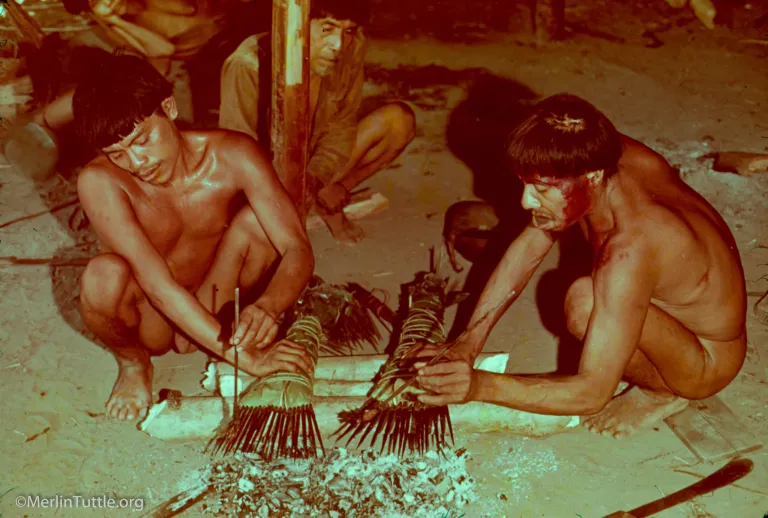
Life among the Yanomamö was full of challenges. Except during brief times when Cecil was available, all communication had to pass from English to Spanish through Maquiritare-speaking Gonzalez for translation into Yanomamö.
Beyond language barriers, team members had to carefully balance between appearing too timid versus aggressive. For example, Merlin quickly learned the dangers potentially posed even by women. One of his first photographic subjects was a cute little boy whose mother promptly objected. He could only guess what she was saying, but her tone of voice and gestures made it clear he was being ordered to stop. Meanwhile, several grinning men were looking on with interest. Would he allow a mere woman to intimidate him? Fearing loss of face, he quickly snapped one more picture and nearly paid dearly when the angry mother picked up a softball-sized rock and hurled it at his head with deadly accuracy. He was saved from serious injury only because the rock glanced off his camera.
On another occasion, several men skillfully followed Merlin into the forest without his knowledge. They feigned an attack while he was checking traps. Silently, one snuck up to within a few feet before deliberately snapping a twig. When Merlin looked around, he was facing a fierce-looking warrior with a seven-foot, curare-tipped arrow aimed at his chest. Surmising that he’d already have been shot if the man was serious, he simply pushed the arrow aside with one hand and tickled with the other, the man went helpless with laughter. Yanomamö couldn’t stand to be tickled.

The outcome of such tests could indeed be funny. But it sometimes was hard to differentiate between harmless tests and serious life and death threats. The villagers seemed perpetually at war, and enemy warriors were rumored to sometimes attack those viewed to be friends of their enemies.
A year earlier, presumed friends from another village had abducted seven women while Bisaasi-teri men were away hunting game for a feast in honor of the visitors. Of course, the returning hunters were outraged and immediately left in pursuit. They attacked at night, fairly easily recovering their wives. But they apparently got greedy and tried to take more than just their wives. The battle stiffened and, according to Cecil’s understanding, two men from the neighboring village were killed. This was felt to be unfair, given that fighting over women, theoretically, was presumed not to justify killing. Thus, men from the village found it necessary to take revenge by killing an equal number of men from the originally wronged village. Obviously, such vendettas could go on indefinitely, and did. While working with the Yanomamö, the team could never be certain of who they might meet in the forest.
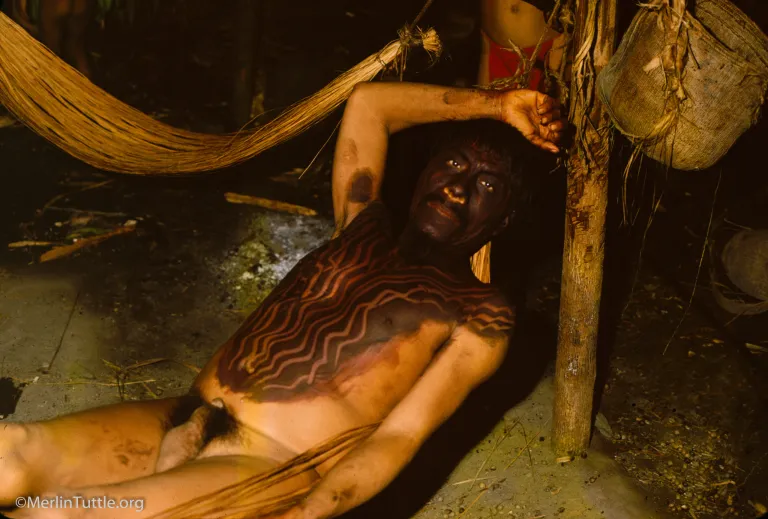
Bisaasi-teri men proved to be outstanding hunters and trappers, enabling team members to spend less time out in the forest. The men especially loved their rat traps, once they learned how to set them. They seemed to know exactly where every rat lived and what would tempt it into a trap. Each interested man was loaned five traps, and whenever a rat was caught, they would come running back with it yelling, “torobo, torobo.”
When Napolean Chagnon heard of Merlin’s trapping success, he invited him to capture those rats stealing grain from his thatched hut across the river. The result was pleasing to all concerned. One of his pests turned out to be a new species of arboreal rat that seldom came out of the forest canopy.
The Yanomamö were also talented observers who led team members to surprising discoveries. For example, they were aware that white bats sometimes could be seen feeding over the river, surrounded by white swallows. At first, Merlin simply assumed they didn’t know the difference. Nevertheless, when one of his most trusted Yanomamö hunters insisted on showing him, Merlin quickly realized this was a very different bat. Now the problem was, how to collect it?
There was no way to stretch even a 12-meter net across 50 meters of open river. The only alternative was one Merlin knew well from his early days of collecting in Tennessee—a shotgun loaded with #12 dust shot. When he began studying bats, neither mist nets nor traps, which he would later invent, (see Blog 2, the Tuttle Trap) were yet available. Those who studied bats were forced to rely on hand nets or shotguns.
For anyone who thinks hunters can’t be conservationists, Merlin points to the fact that historically America’s greatest conservation leaders, from Roosevelt and Audubon to Merriam, began as hunters. He never took pleasure in animal suffering, never shot or trapped more than needed, and always worked hard to overcome needless human persecution or careless exploitation.
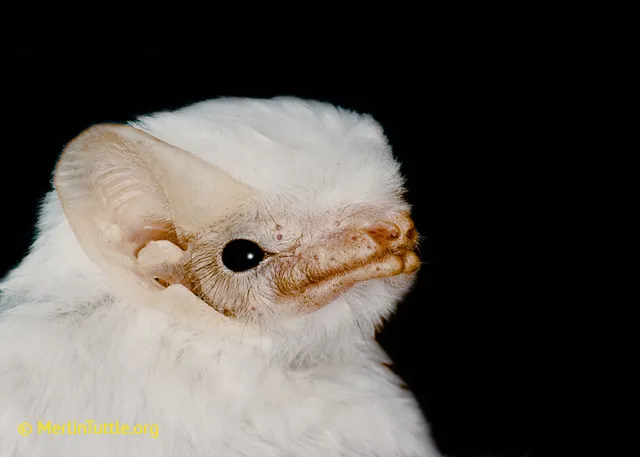
Within minutes, Merlin was clambering into a small dugout canoe, shotgun in hand. His quarry was showing very unbatlike behavior, flying in the middle of a flock of swallows, as they traveled up and down the river feeding in the late afternoon sun. Chasing after them in a tippy canoe was hopeless. The craft was so small, he feared falling overboard from simply firing his 16-gauge shotgun. Thus, he had his most reliable assistant, Sido Hernandez, position their canoe at the mid-point in the flock’s circular flight path where they waited impatiently. As the flock approached, Merlin checked his balance, aimed and fired. The bat fell, and Sido fought to keep the canoe upright amid Merlin’s screams. “Quick! Paddle fast! We’ve got to get it before a fish does!” Moments later Merlin snatched his first ghost bat from the river, along with several unfortunate swallows who also joined the Smithsonian collection.
Back in camp, he used his new bat key to confirm he’d just collected the first Isabelle’s ghost bat (Diclidurus isabellus) seen since one had been discovered dead and assigned a name by British taxonomist Olfield Thomas in 1920. Over the following week, Merlin’s team discovered that the species was relatively abundant. However, because it never fed low over land or small streams where it could be mist netted, the species had long escaped notice.
He soon observed that these bats continued feeding low over the river, long after the swallows went to sleep. By cutting five-gallon oil cans to form reflectors with lanterns inside, and cruising the river searching, his team added eight more to the Smithsonian collection. Later, they would find more at localities ranging widely from the Casiquiare Canal to San Juan de Manapiare.
Nevertheless, scientists still know almost nothing about this elusive bat, though it likely occurs over a much wider range. Where does it roost? What does it eat, and what does it need to survive? Merlin believes he has the solution and wishes a student of the future an exciting discovery. His idea—light-weight fly fishing tackle, casting a tiny fly with a barbless hook onto the water in front of a feeding bat (harmless to bats). When an Isabelle’s ghost bat grabs it, simply reel it in, attach a tiny radio transmitter to its back, and be the first to discover one’s roost.
Thanks to the expert assistance of the Yanomamö hunters over the next four weeks, the expedition was able to collect 524 mammals of 76 species. This may sound like a threat to the mammal fauna. However, Tuttle is quick to point out that on average, they took fewer than seven specimens per species out of more than a hundred and probably missed more than 25 entirely. That was barely a dent, considering the diversity and numbers of species present.
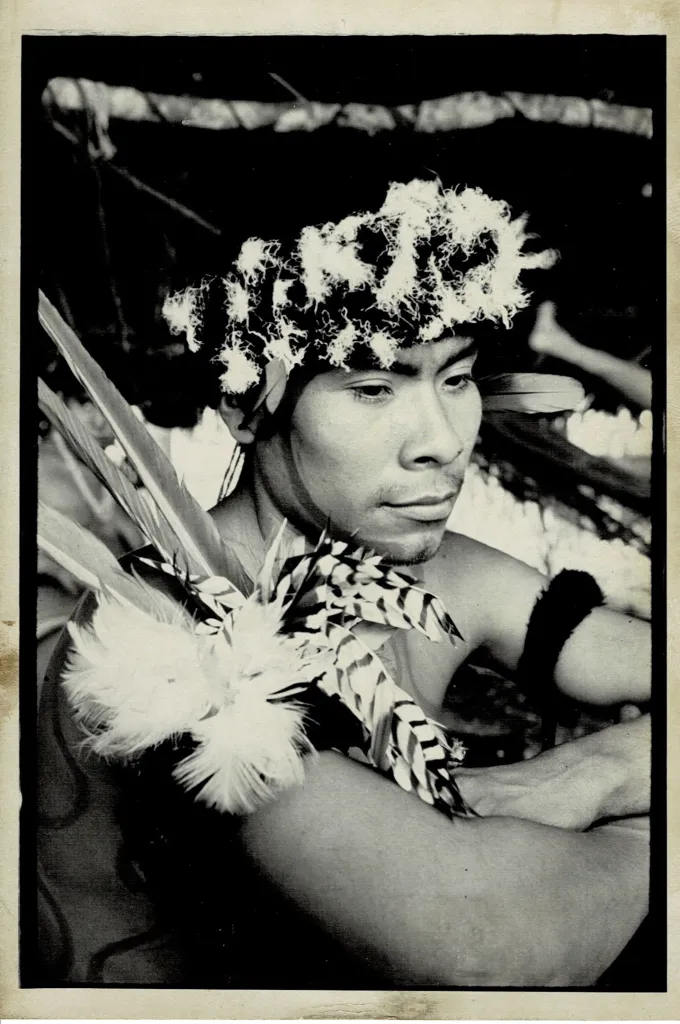
Merlin reminisces they could have done even better had it not been for many of the men leaving for over a week to carry out a raid against another village. One of his most memorable evenings was the one he spent observing preparations for the raid.
Several days in advance, women had chewed plantain and spit it into a bark trough where it was mixed with water and ashes of their fellow warriors who had been killed in the last raid against them. They had been cremated and their ashes stored for this special occasion.
The men donned bird- and monkey-tail apparel, assisted by their wives who painted their bodies using bright red dye from seed pods and charcoal mixed with spit. Finally, a black monkey tail would be wrapped around a man’s head and covered in white vulture down by his wife.
When all was complete, an emotional ceremony began. The now alcoholic beverage, containing ashes of cremated corpses, was drunk from gourds. Soon groups of men began trotting in circles in front of their shabonos (lean-tos). It was quite a spectacle, as groups of decorated men brandished bows and seven-foot arrows and screamed threats. Echoes from the forest were interpreted as spirits of the deceased, encouraging them to be fierce in avenging their deaths.
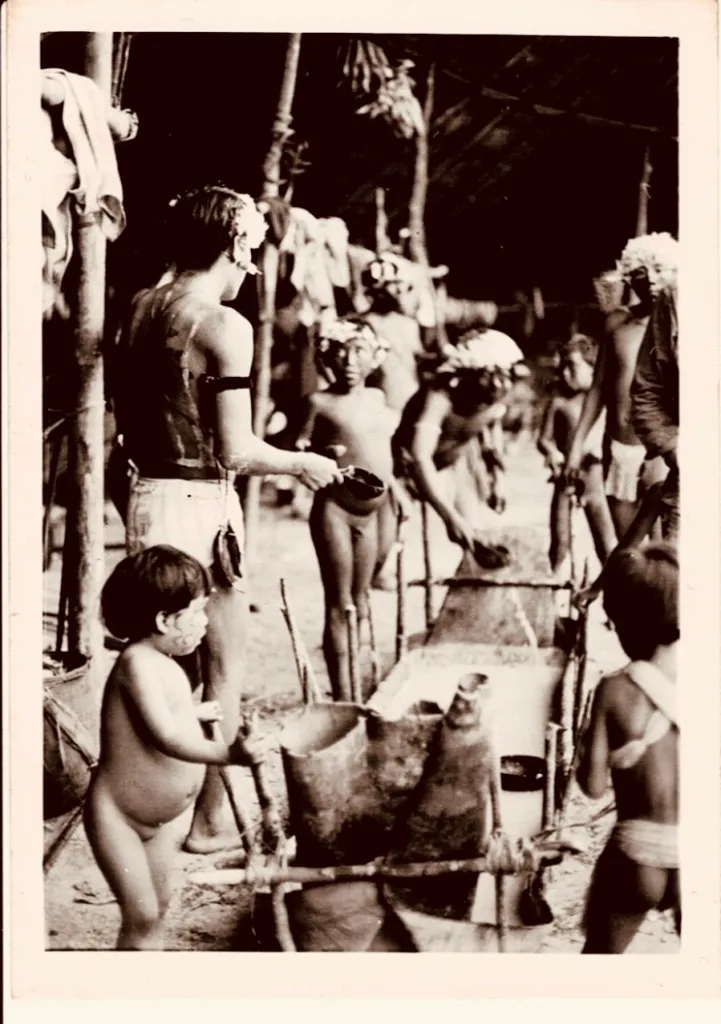
Soon after the raiders returned, they informed Merlin that another village, some 20 miles upriver, had been temporarily abandoned. The village bordered a mountainous area that supported an especially rich fauna where lowland and highland species converged.
Merlin had been tempted to sample the area, but had not been able to, because village warriors had threatened to kill any outsiders who invaded their territory. On hearing of their temporary departure, Merlin immediately organized an exploratory trip, with Sido operating one of their motorized dugouts. They planned to spend an evening netting bats there, but apparently their informants were mistaken. Soon after tying off their canoe and heading into the forest in search of netting sites, they heard the unmistakable sound of a large group of Yanomamö men passing along a riverside trail.
The men couldn’t miss seeing their large canoe and would recognize it belonged to invaders. Merlin and Sido quickly froze behind the buttress of a large tree. What would the warriors do? Would they attempt an attack, cut their canoe loose, depriving them of an escape, or simply wait in ambush for Merlin and Sido’s return?
When the forest suddenly became eerily silent, they assumed an ambush. Fearing a prompt return, they waited for what seemed like forever—till two o’clock in the morning–before attempting a return. They crept along as quietly as possible, hands covering headlamps, allowing just tiny slits of light to guide them. Luckily the canoe was still present. However, they were terrified of the noise they would create pushing off and starting the motor. As Sido crept back to the motor, Merlin waited to shove off, both expected to be struck by an arrow. Fortunately, it was a moonless night and they breathed a huge sigh of relief when they had finally drifted far enough to dare start the outboard motor.
Founder of Panthera.org and conservationist, Dr. Alan Rabinowitz, while a graduate student, had done bat field work with Merlin. Inside his book, Jaguar: Struggles and Triumph in the Jungles of Belize, he signed a copy to Merlin as so:
“To Merlin,
the man who taught me what real field work is all about. I knew after surviving with you that I could do anything–Alan”Alan Rabinowitz, author of Jaguar
Merlin was thankful to have escaped. Nevertheless, he was tempted to sample at what he hoped would be a safe distance from the reported-to-be enemy village. Several days later, he ordered his camp moved 10 miles upriver, to an area still ostensibly controlled by the Bisaasi-teri village. Two of their men were hired to accompany the expedition, though communication remained difficult.
Just as Merlin’s expectations were proving true, he was forced to flee. It all began as he, Fred, Gonzalez, and two Bisaasi-teri Yanomamö had begun netting the first few bats of the evening. As a Jamaican-fruit-eating bat gave a distress call a nearby jaguar growled. This was far from the first time Merlin had had a hungry jaguar attempt to frighten him into abandoning what the cat perceived to be potential prey.
He handed the bat to one of his helpers, grabbed his 16-gauge shotgun, changed the load to buckshot, and proceeded to hunt the cat. However, when the next growl came from an all new direction his Yanomamö helpers immediately insisted the sounds were from enemy Yanomamö, not from a jaguar. He initially discounted them, assuming they were merely attempting to frighten him into quitting work early.
When Merlin persisted in his hunt, a growl from a third location spooked even him and had his Yanomamö men running for the canoe. He quickly joined them, leaving the nets behind. The next morning, when they returned to retrieve the nets, they were hanging limp. All the main strands had been cleverly removed, unmistakable evidence of enemy presence. Yanomamö men were well known to prize nylon net cords for tying tips onto their 7-foot arrows.
The team quickly broke camp between heavy downpours. A rainy season, claimed to be the worst in a hundred years, soon had them searching for a new campsite secure from a more than 20-foot rise in water level. Surviving deluges of rain and massive flooding would be their next challenge.
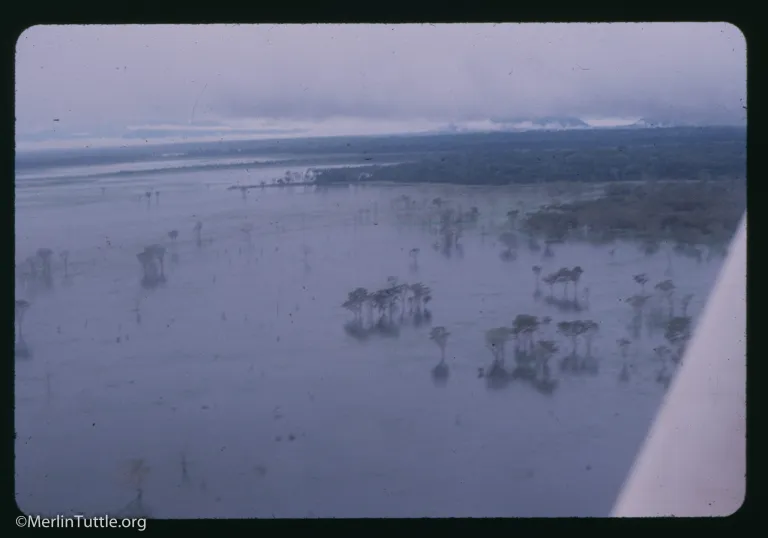
Love our content? Support us by sharing it!
Merlin and MTBC team members spent 19 days in Costa Rica last November on a filming trip for “Bat City” with its Director and Emmy
Bats can use sounds in many complex ways. They can sing and even have different dialects… When imagining a bat, the first thoughts that come
It was a long road to Austin, Texas. More than five years after my first introduction to Merlin Tuttle’s Bat Conservation as a teenager, I packed
TEDx Talks recently released the video of Merlin Tuttle’s fascinating presentation about bats at TEDxUTAustin’s seventh annual conference, held on March 23rd. During his presentation,
2024 © Merlin Tuttle’s Bat Conservation. All rights reserved.
Madelline Mathis has a degree in environmental studies from Rollins College and a passion for wildlife conservation. She is an outstanding nature photographer who has worked extensively with Merlin and other MTBC staff studying and photographing bats in Mozambique, Cuba, Costa Rica, and Texas. Following college graduation, she was employed as an environmental specialist for the Florida Department of Environmental Protection. She subsequently founded the Florida chapter of the International DarkSky Association and currently serves on the board of DarkSky Texas. She also serves on the board of Houston Wilderness and was appointed to the Austin Water Resource Community Planning Task Force.
Michael Lazari Karapetian has over twenty years of investment management experience. He has a degree in business management, is a certified NBA agent, and gained early experience as a money manager for the Bank of America where he established model portfolios for high-net-worth clients. In 2003 he founded Lazari Capital Management, Inc. and Lazari Asset Management, Inc. He is President and CIO of both and manages over a half a billion in assets. In his personal time he champions philanthropic causes. He serves on the board of Moravian College and has a strong affinity for wildlife, both funding and volunteering on behalf of endangered species.